Voigtlander 12mm
Certains diront que Voigtlander a poussé les grands angles dans les extrêmes, je n’irai pas les contredire. Trop, c’est vraiment trop.
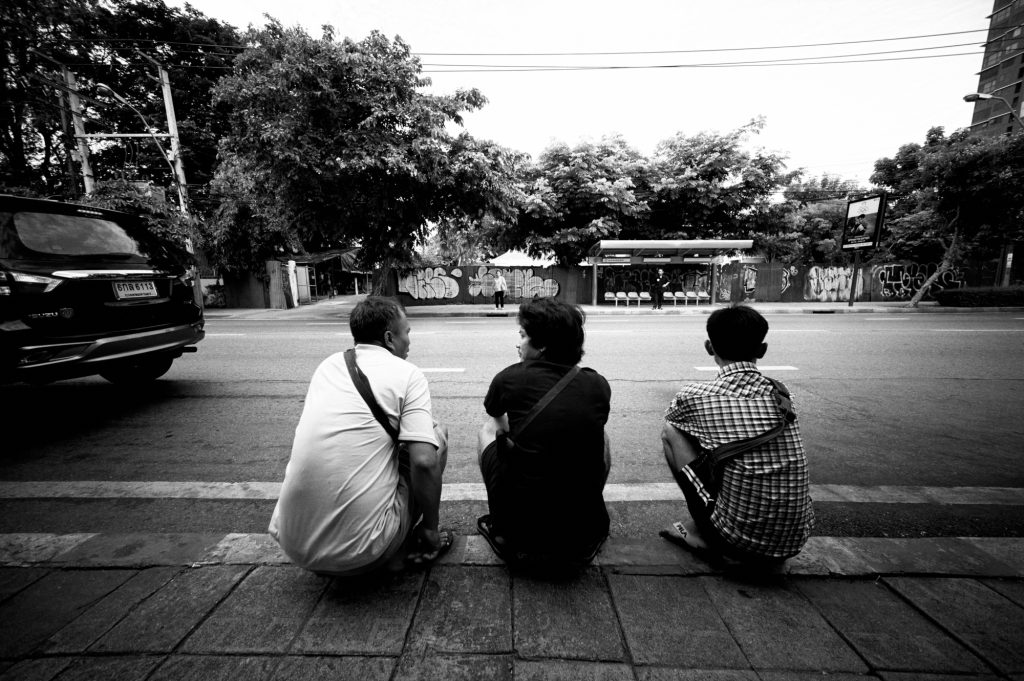
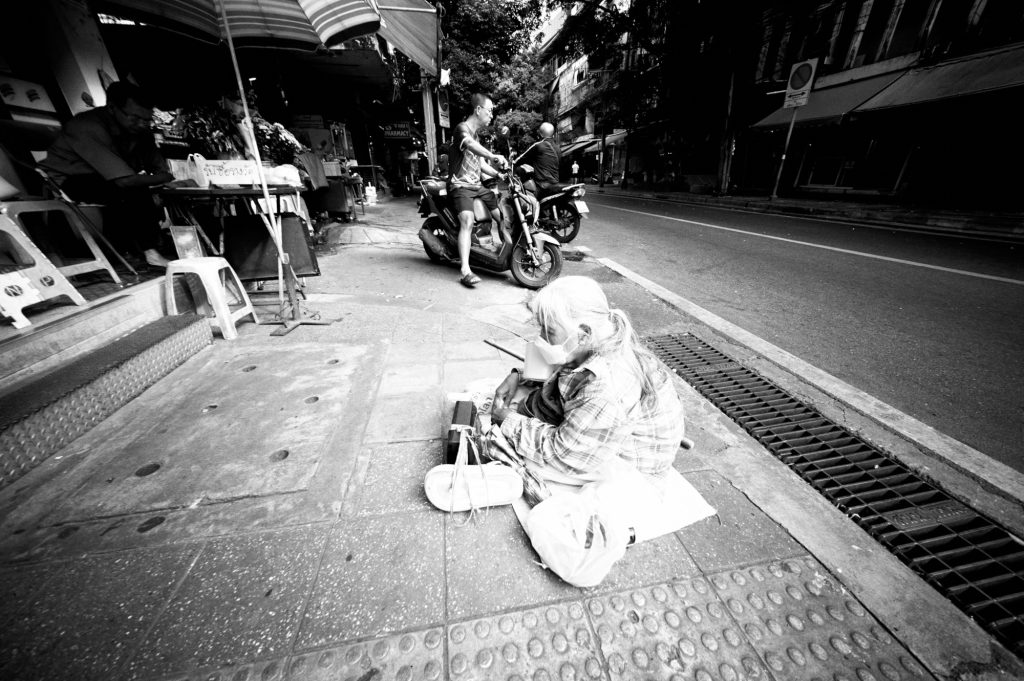
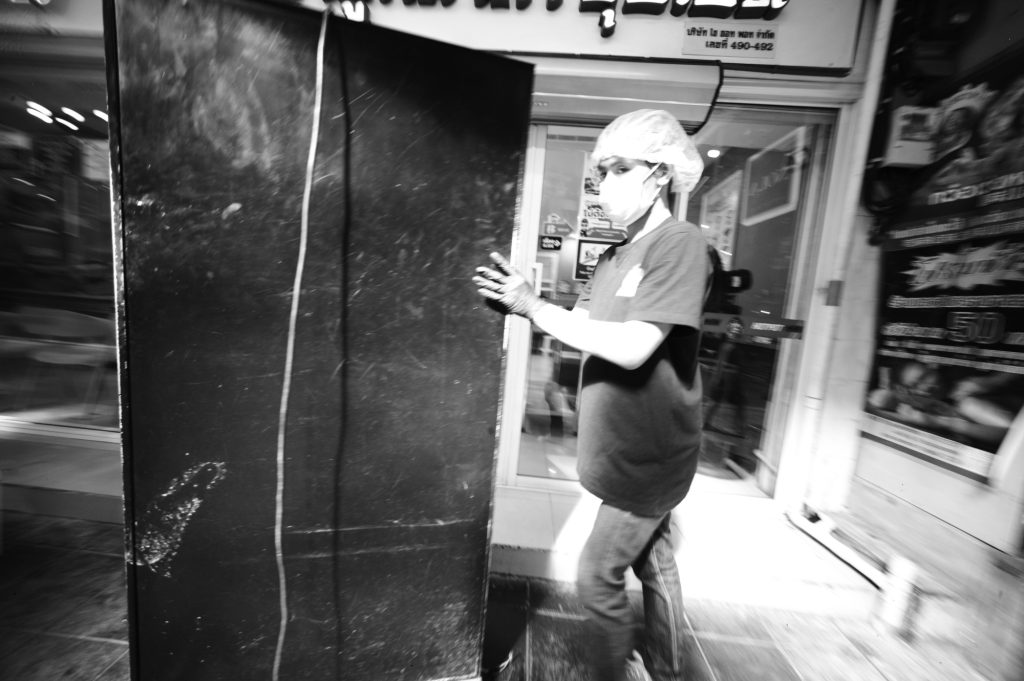
Certains diront que Voigtlander a poussé les grands angles dans les extrêmes, je n’irai pas les contredire. Trop, c’est vraiment trop.



Ça faisait un moment qu’un 12mm Voigtlander d’occasion me faisait de l’oeil dans la vitrine du marchand. J’ai cédé à la tentation.
Ces images sont directement sorties du M9 au format JPG. Je n’ai rien édité, rien changé (cet appareil photographique est une dinguerie).
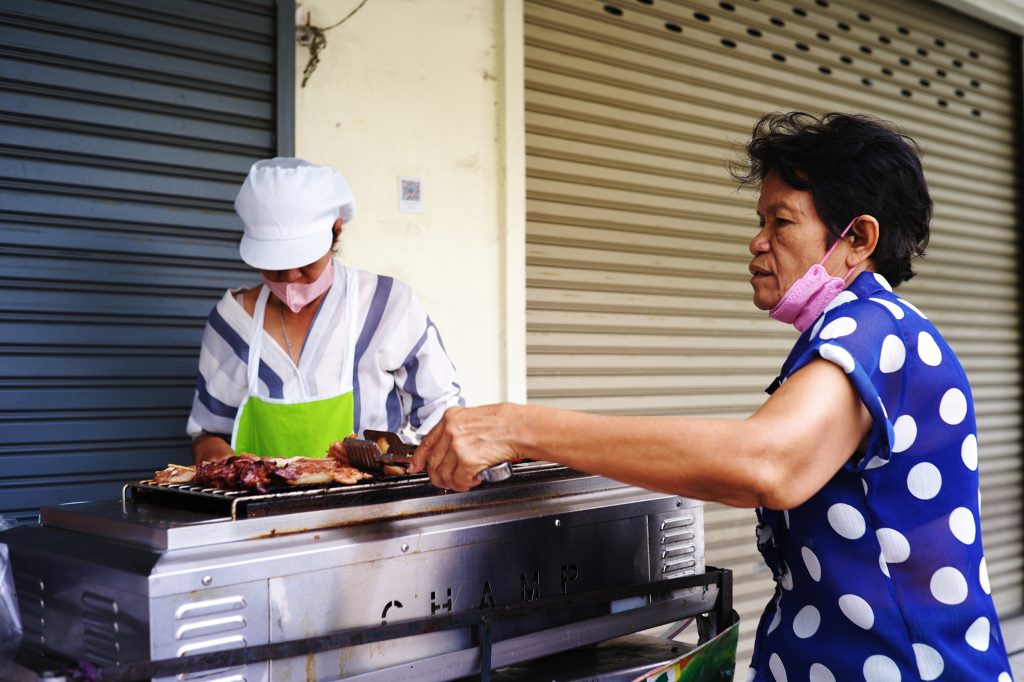
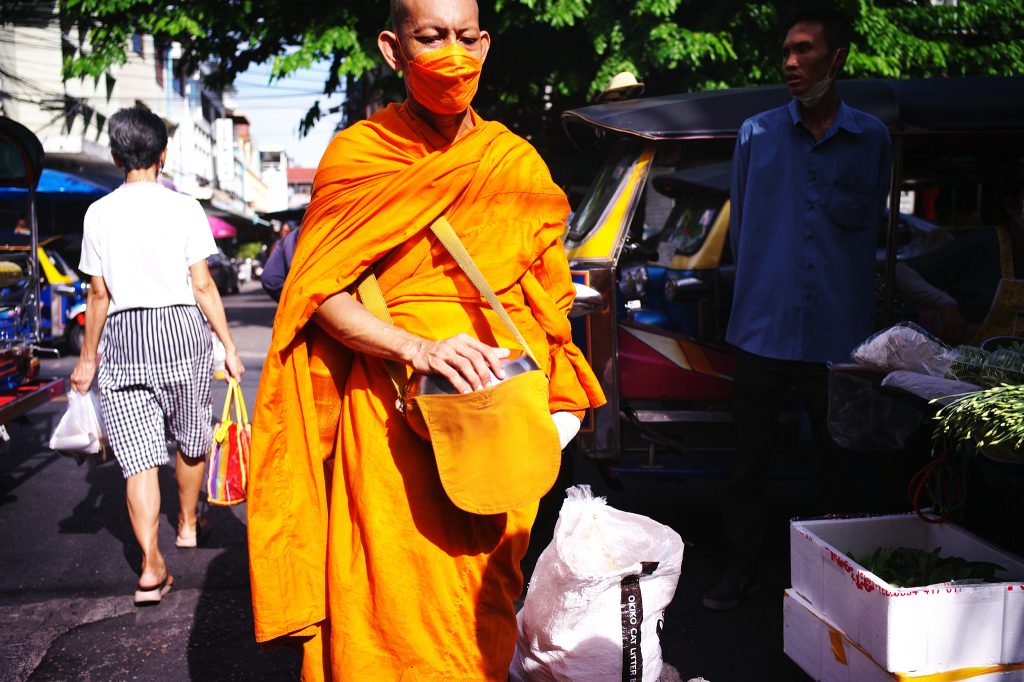
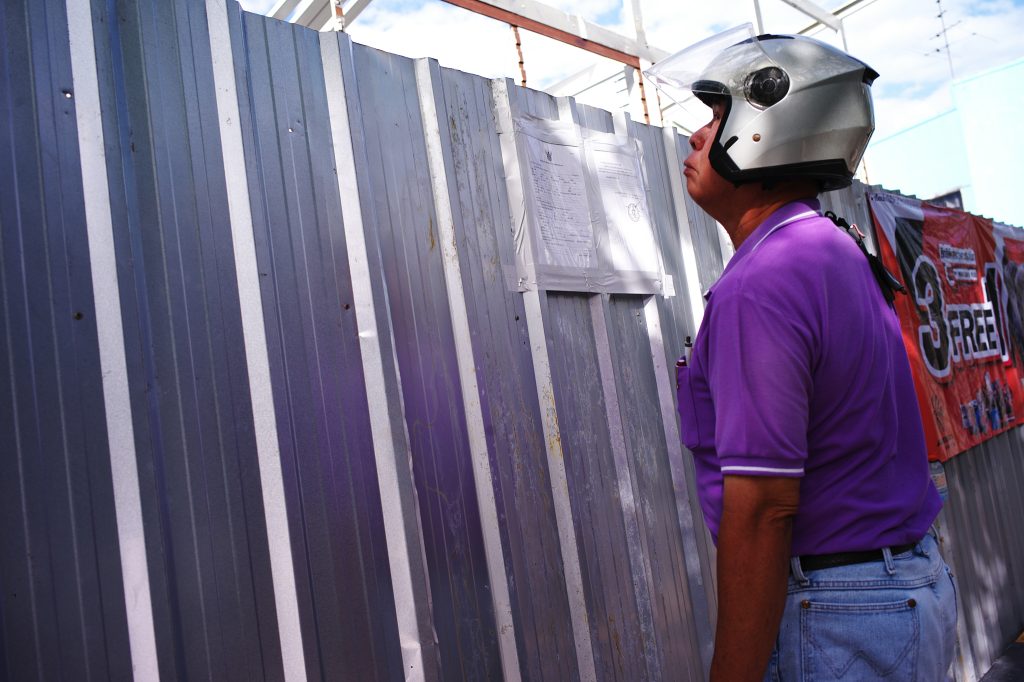
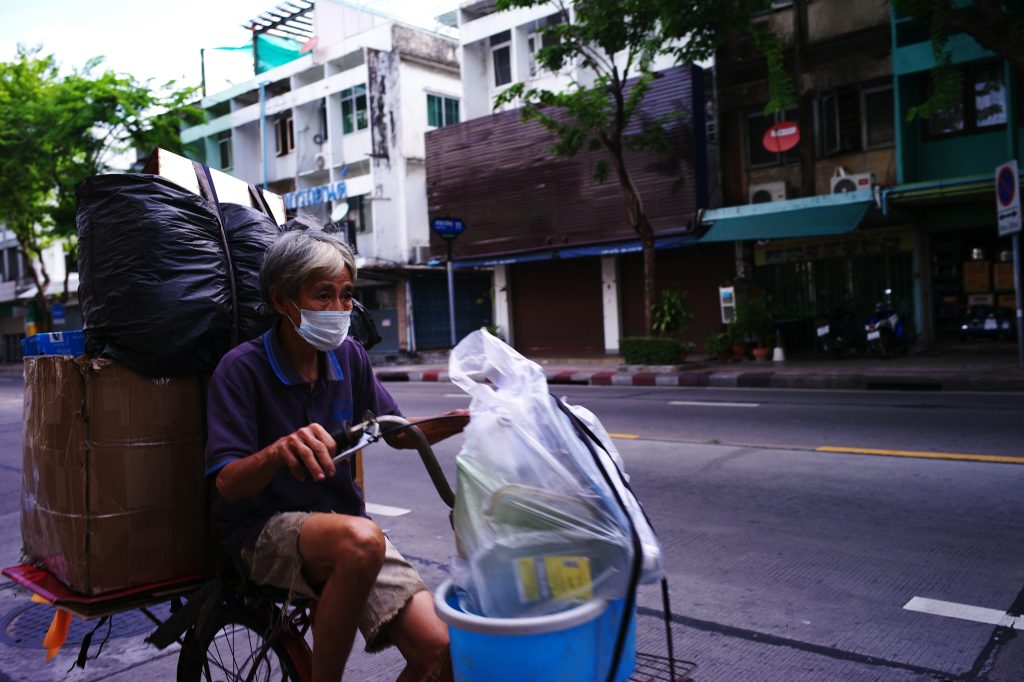
Le principe consiste à pré-régler l’objectif sur une distance fixe, ici un mètre cinquante centimètres, puis de déclencher au moment juste ou le sujet passe à cette distance de l’appareil. Bien entendu, on compte sur un peu de profondeur de champ, ici j’utilise un 28 mm fermé à 4.
L’appareil est porté a main levée, on prend la photo au jugé, sans même viser. Au bout d’un moment, l’habitude vient, on cadre et on estime la distance sans trop y penser, l’habitude des doigts font qu’ils savent par avance comment placer la caméra et à quel moment déclencher.
C’est une technique très commune et très simple qui s’appuie sur le développement d’une habitude (erreur et correction) pour améliorer une compétence. C’est presque une photographie physique, ou le corps calcule et agit seul. Malheureusement, elle est peu utilisée avec les appareils modernes, surtout parce que ceux-ci font la mise au point tous seuls et empêchent l’acquisition d’une connaissance par corrections d’erreurs.
Par contre, cette technique se prête très bien au Leica M, appareil discret qui tient parfaitement dans la main et dont la mise au point irrémédiablement manuelle permet de s’amuser à tout.
Je mets ici mes premiers essais, pas trop mal réussis. Je mettrai les suivants, qui ne pourront être que meilleurs, sur une galerie dédiée de LFI (lien ci-dessous).
https://lfi-online.de/en/gallery/stephane-t-850354/c3-80-la-sauvette.html

Premier jour avec un Voitlander Ultron 28f2. Premier sentiment, sans être volumineux, l’objectif est plus gros que le 21f4 ou le 40f1.4 de la même marque. La finition est meilleure, la bague du diaphragme est beaucoup plus douce et la distance entre chaque cran me paraît plus régulière (bien que la séparation entre 16 et 22 est tout de même plus courte que les autres). La bague de mise au point et douce, rien à dire de ce côté là. La fabrication est sérieuse.
D’un point de vue optique, l’objectif est bien meilleur que mes autres objectifs Voigtlander dès la pleine ouverture, au point de me faire hésiter à acquérir les autres modèles de la gamme Ultron. Le vignetting est beaucoup moins présent et la qualité reste très bonne jusque dans les angles (ça change du 40f1.4 et de ses coins flous).
Globalement, Voigtlander faisait de très bons objectifs, avec ce 28, ils sont maintenant excellents.
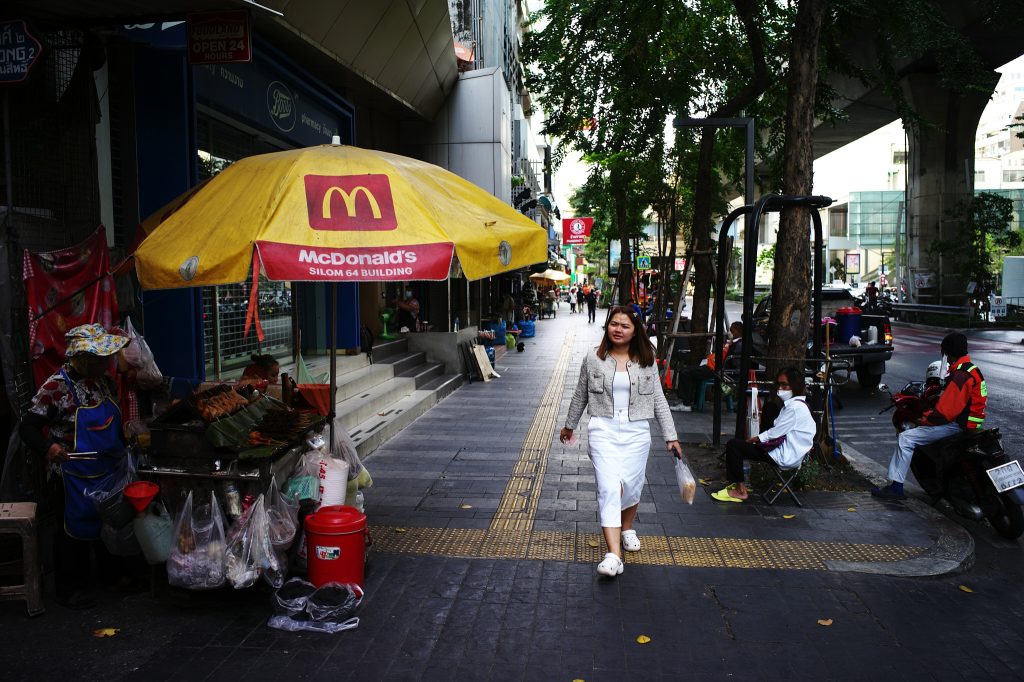
Un nouveau Mac Donald a ouvert à Bangkok.
Habitué au 40mm et au 21mm, j’ai du mal à me placer dès le premier jour avec le 28mm, focale grand angle intermédiaire que je confonds parfois avec l’angle plus serré du 40. Je suis alors surpris de découvrir sur le LCD une scène qui ne correspond pas à l’image que je m’en faisais.
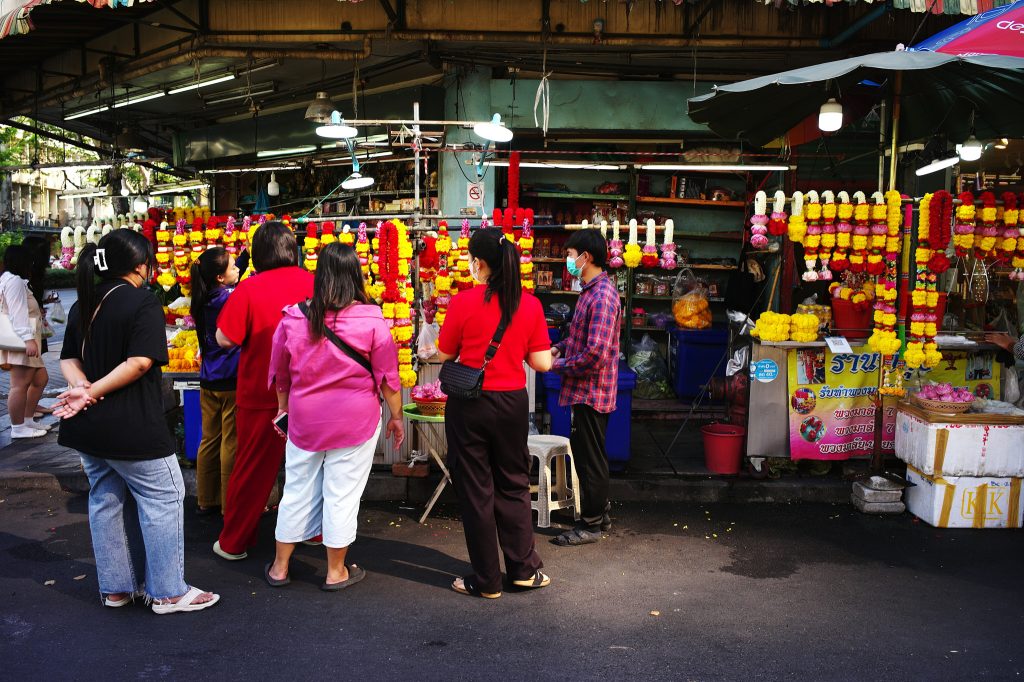
En fait, le 28mm correspond au cadre le plus grand du viseur du M9, ce qui en fait l’objectif le plus naturel pour ce boitier: ce qu’on voit dans le viseur sera ce qu’on voit sur la photo (enfin, c’est un viseur Leica, donc faut pas rêver quand même).
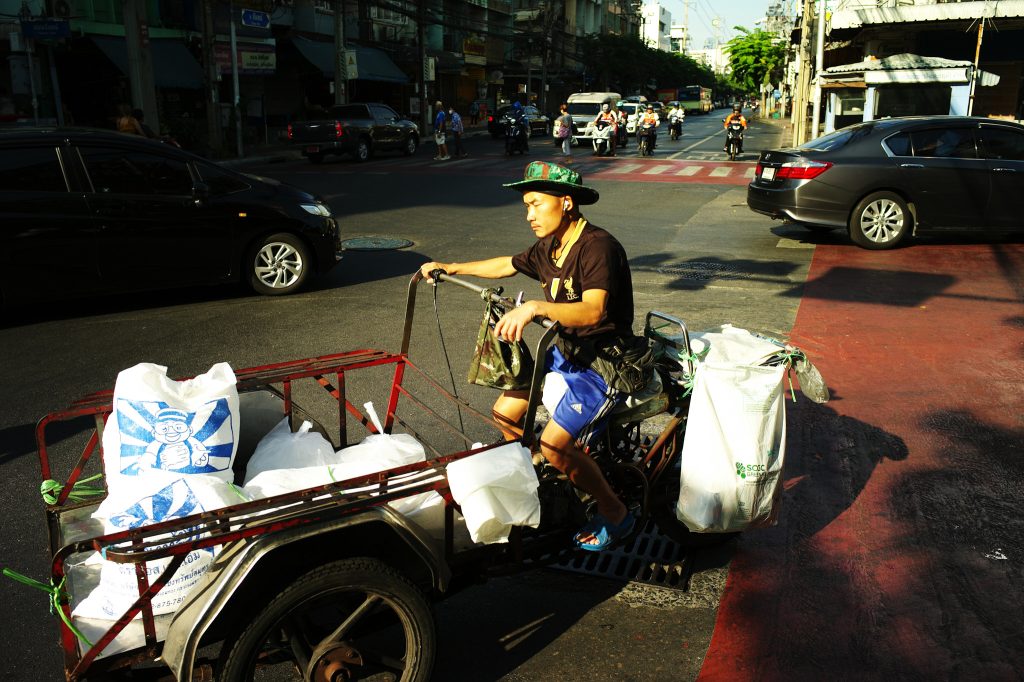
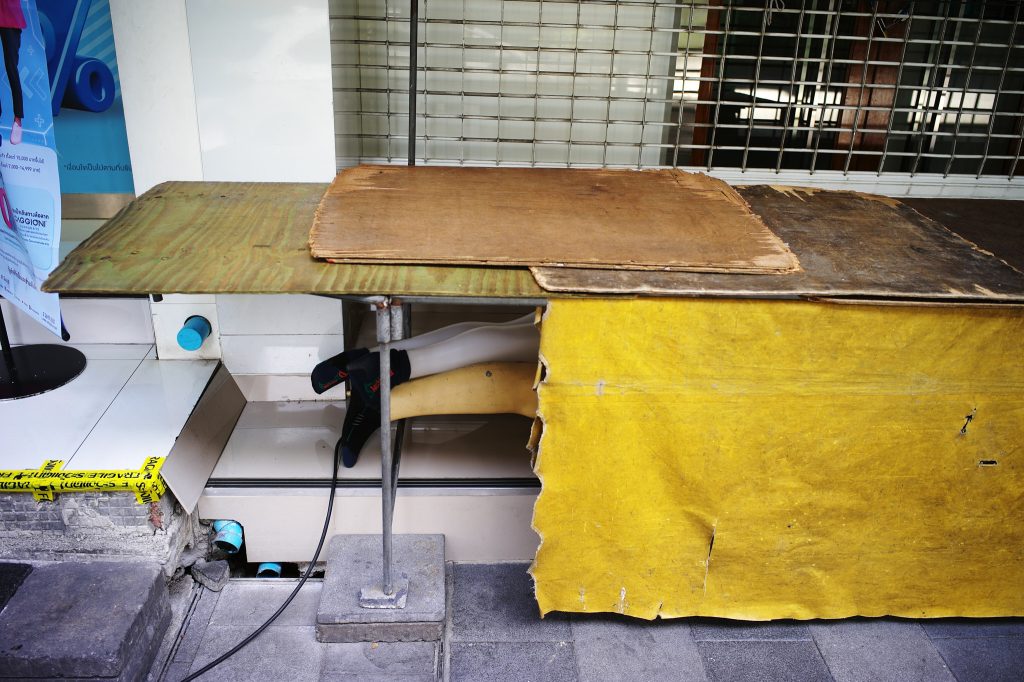
Mais que font-ils sous la table ?
Je n’ai aucun doute que le 28mm de Leica est excellent, mais est-il aussi bon qu’il est cher ? À n’en pas douter, le Voigtlander représente une alternative tout à fait viable au Leica, avec sa fabrication tout métal et d’excellentes qualités optiques dans un prix raisonnable. Il a tout pour satisfaire l’amateur averti.
Dans les 700 Euro, prix du neuf, je n’irai pas dépenser plusieurs milliers d’Euro pour acquérir son équivalent dans la marque au point rouge.
J’ai, ces derniers temps, trainé sur le forum anglophone “Real Photographers”. Le forum en question a été créé par le fondateur du site mmc35, un site dédié à la photographie classique ou des auteurs partagent leur expérience de l’usage du film ou d’anciens appareils photographiques.
Il allait sans le moindre doute pour moi que le terme “Real Photographers” (les vrais photographes) désignait des gens passionnés et des forcenés techniques qui allaient tous parler de chimie photographique, de calculs sur les optiques et de thèses complexes sur la compositions dans un cadre 6×9. Je faisais mes premiers articles avec humilité, montrant quelques photographies faites au Leica en m’attendant à recevoir de sévères critiques.
J’ai appris en fait que le terme de vrais photographes faisait simplement référence au fait que l’ouverture d’un compte était conditionnée à la fourniture de sa véritable identité (sans même que cette identité ne soit vérifiée d’ailleurs), mais que cela n’avait aucun rapport avec une pratique approfondie des techniques de la photographie. “Real” ou “vrai” pour vraie personne.
Comme partout ailleurs, les discussions ont très vite tournées autour de la “créativité” et de “l’art”. Jusqu’à ce qu’un des intervenants montre quelques photographies floues et sans intérêt dans l’espoir de démontrer que la créativité pouvait même se passer des compétences techniques. C’est pathétique.
Il fût un temps ou la nature des équipements photographiques ne laissait aucun choix à leur utilisateur et ou il fallait en passer par l’appréhension et la compréhension de règles techniques telles que l’ouverture d’un diaphragme et le rapport avec la sensibilité du film et la vitesse d’obturation. Certains amateurs mêmes dédiaient une salle pour monter un petit laboratoire N&B ou ils développaient et tiraient leurs propres images (je l’ai fait).
La photographie est un voyage, l’image n’en est que sa destination. Les appareils photographiques modernes et les capacités de traitements des images des logiciels ont mis à porté la réalisation d’un travail professionnel à des amateurs incapables d’en comprendre les règles les plus basiques. Nous sommes inondées d’images techniquement correctes, même souvent photographiquement correctes, mais réalisées quasiment par le fruit du hasard ou d’algorithmes et non celui de la compétence et de l’expérience.
Les appareils photographiques modernes sont capables de tout, ils corrigent tout, même les flous de bougé ou les contre jours. Ils donnent des fichiers gigantesques dans les quels il devient possible de couper, de tailler, d’extraire tout et n’importe quoi à l’aide de programmes puissants et simples d’utilisations ou l’usage de l’IA permet en un ordre de détourer une image ou même de créer du contenu qui n’existe pas.
Tout ceci n’est pas de l’art, ce n’est pas de la technique, c’est juste de la triche. L’art n’a de valeur que dans le travail et la compétence qu’il transporte.
Depuis l’avènement des appareils photographiques digitaux, nous sommes submergés d’images. Il suffit au premier imbécile venu de prendre le dernier Nikon et de shooter en rafale n’importe quel sujet, sans même regarder dans le viseur, à plus de quinze images par seconde, dans le lot, il y en aura bien une de bonne.
Et c’est vrai, ces appareils sont extraordinaires à plus d’un titre et j’ai même vu un professionnel shooter un évènement sans jamais regarder dans le viseur. En fait, il ne manque que deux jambes pour se déplacer et un doigt pour appuyer sur le déclencheur et ces appareils n’auront même plus besoin du photographe pour les tenir.
On me dit dans mon oreillette que cela existe déjà, que ça s’appelle un drone et qu’opéré depuis une IA, il n’a, en effet, plus besoin d’un quelconque photographe.
Cette manière de faire fait peut-être de bonne photographies, mais elle ne fait pas des bons photographes. Je suis toujours béa d’admiration devant les archives de l’agence Magnum, ou des photographes, des vrais, avec un Leica, sans cellule, sans moteur et avec seulement 36 poses sur un film sortaient une série d’images et se permettaient encore d’en supprimer la plupart parce qu’elle ne répondaient pas à leurs critères de qualité (j’aimerais déjà savoir faire aussi bonne que les plus mauvaises qu’ils faisaient).
Je vous renvoie au livre “Magnum Contact Sheets”.
Nous ne manquons pas de bonnes photographies, mais de bons photographes. Loin de moi l’idée d’ailleurs de critiquer cette mauvaise façon de faire, je l’ai moi même pratiqué pendant des années. Mais c’est en ressortant mes vieux clichés, dont de nombreux sont faits au Voigtlander Bessa R2 que je me suis rendu compte que j’étais meilleur photographe avec les limitations d’un film qu’avec la liberté du digital.
Aujourd’hui, je règle mon appareil photo avant de sortir. Comme on choisit son film, je règle la saturation, la sensibilité, le “sharpening” et le contraste une fois pour toutes et, pour que chacune compte, je sors faire 36 photographies. Je n’enregistre que les JPG qui ne subissent aucun post-processing (ce qui n’est pas bon au cul de la caméra n’est pas bon tout court).
Street is a theatre where happens the life of a city. People come and go, kids play, here takes place the history of a people. By those small details, the photographer has the duty to record nothing less than history.
Have you ever watched the street photographs of Cartier Bresson ?
Cartier Bresson did not do more than just recording with his camera the day to day life of passing people in various situations. They were interesting at that time because Henry Cartier Bresson is a great photographer at any time, but they are even more today because they show a time who has disappeared already.
The time of today is the time of today, it will eventually disappear all the same. Because rules and laws change, because tradition is lost and new habits come to replace old habits. Images of the city change day by day.
The street photographer has the duty to record images of this theatre at this very moment.
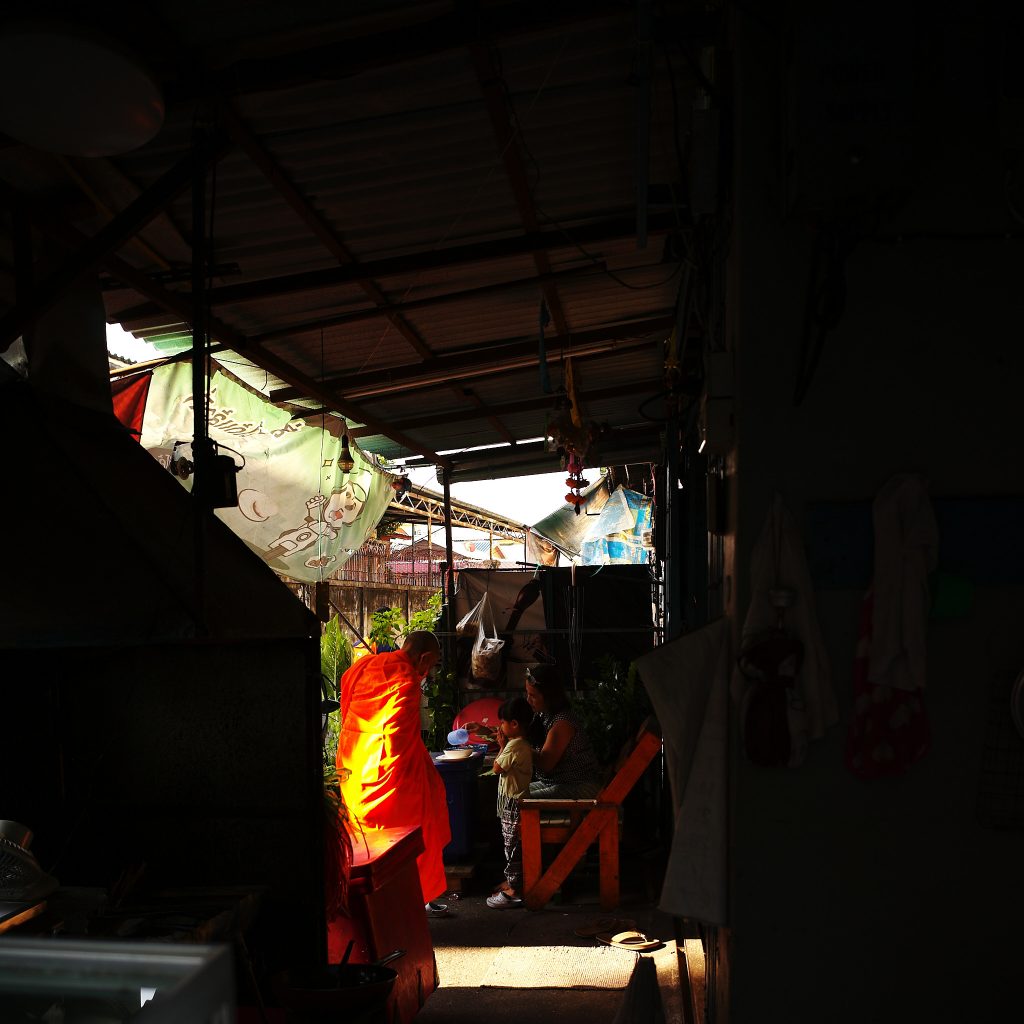
A priest is giving a blessing inside a house. Bangkok 2023.
If the art of photography follow rules, the art of street photography has none but the daring of each street photographer. What I share here is only my view, my way of doing things, most of those rules should apply in most cases, but some people are more daring than others.
To make street photographs, I run the street. I walk more than ten kilometers every week end in the streets of wherever I live at the time and I shoot, I shoot again and I still shoot until I can not shoot anymore. To force me to shoot more, I use the guilt feeling of purchasing expensive photographic gears, I would not feel good not using them, so I go out and use them to take shots of whatever surrounds me.

A woman is cleaning some dishes in the street, Nanjing, China 2010.
I improve my technical knowledge. Whatever my camera does automatically for me, I must be able to do it myself. Preferably, I work in manual mode, make my own focus, use a hand cell to define the shutter speed and the aperture. This knowledge will give me the mean to alter the photograph at the time of taking the shot, not trying to get things good during the post processing.
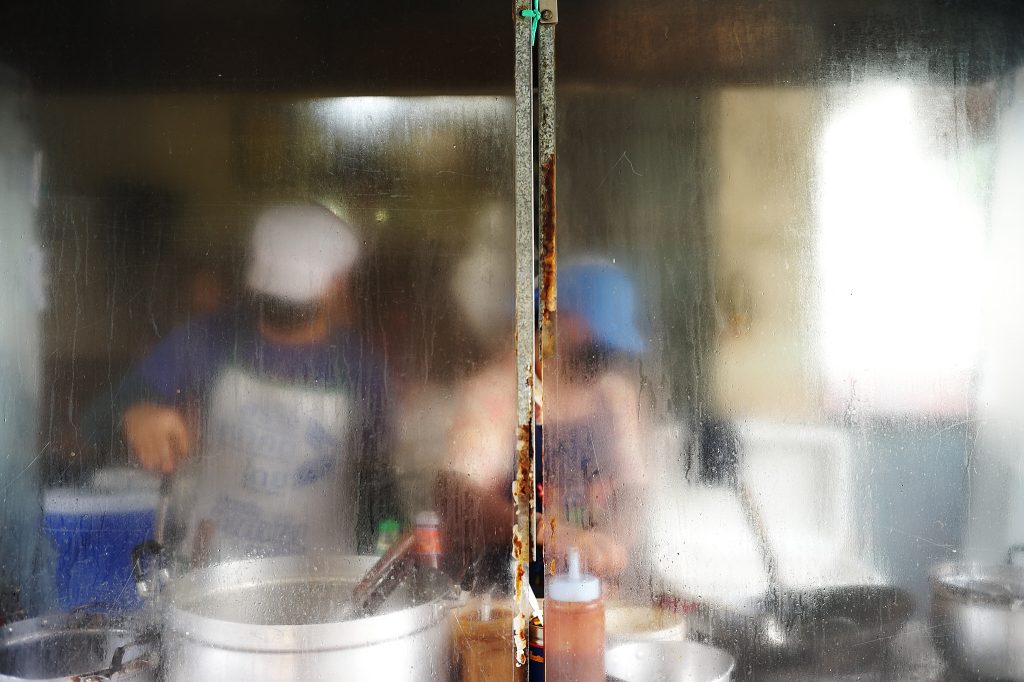
Street cooks, Bangkok, Thailand 2023.
I mostly shot people in action. A theatre means that there is an action, it happens that the action is performed by animals or vehicle, but most of the time, action is performed by people. So I take photographs of people while they are doing things, trying to not be seen myself (otherwise, it would change the way they perform their action).
I prefer wide angle lenses. Believe it or not, I have less chances to be seen taking photographs of people when I’m close to them using a wide angle than when I’m far and using a tele-lens. Ma favorite lens is the 21mm, but I’ve worked with some 12mm in the past.
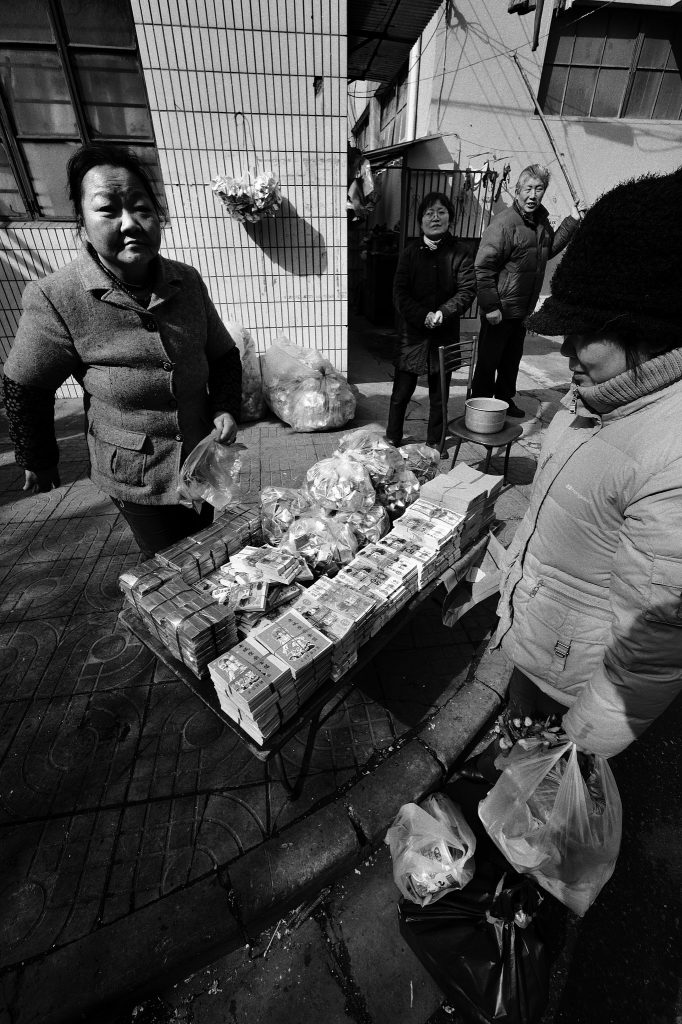
Nanjing, China, 2010. Nikon D700 with the 15mm Nikkor.
When people see me, I smile, I great them, say “hello”, re-assure them on my intention. Most of the time, it happens good, people just want to ensure I mean them no harm, but it happened in the past that I face people unhappy to be in the photograph, even become aggressive, I usually leave the place.
I never shot inside private property without prior autorisation. Living in Thailand, where the border between private property and public place can be quite blur at some time, I miss many shots because of this rule. But that’s a point that I would not like anybody to be invasive in my home, so I’m not invasive in their home.
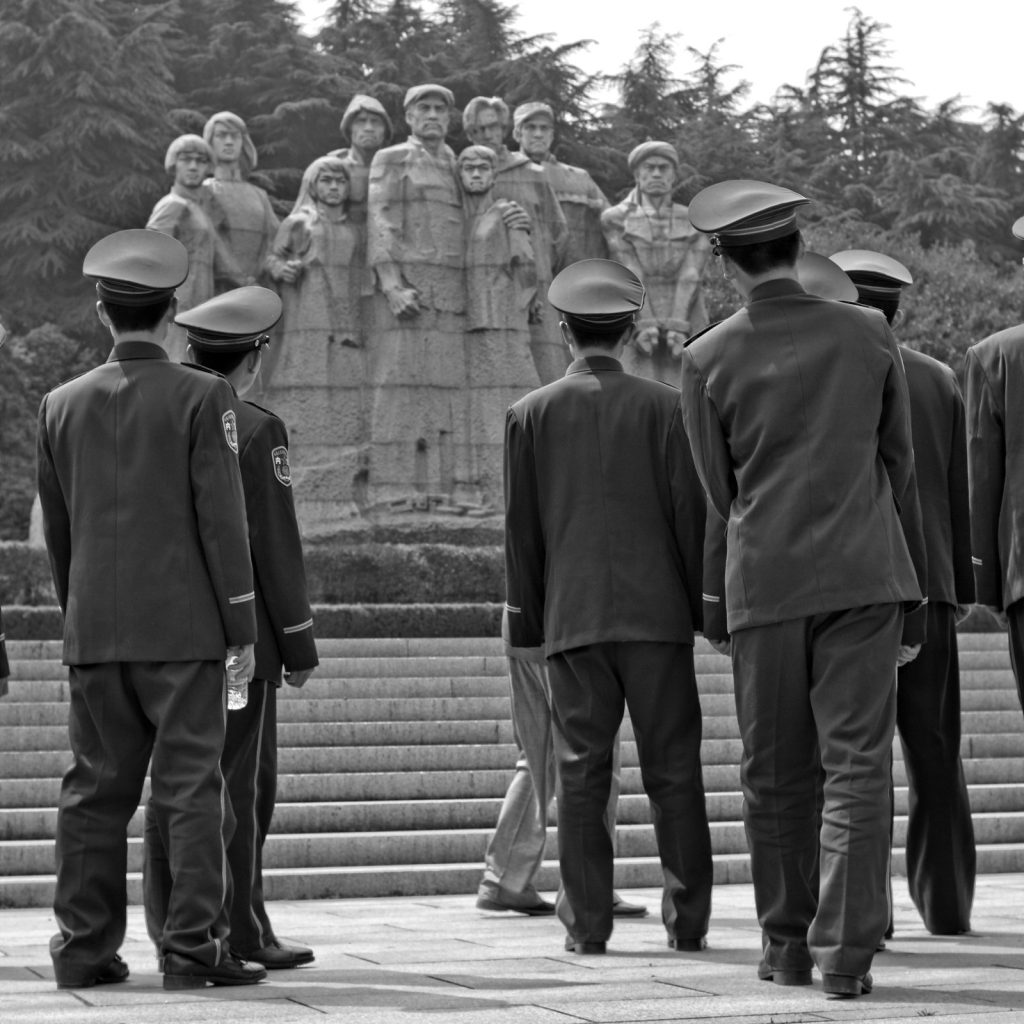
Nanjing, China 2008
I learnt that I must never shot official and governmental facilities, ports, airports, train stations and especially military facilities (that can lead to a whole lot of problems). However, most of the time, there is no issue to photograph police in action (it may depend on the country). I’m not a reporter, so I prefer to stick with street photographs.
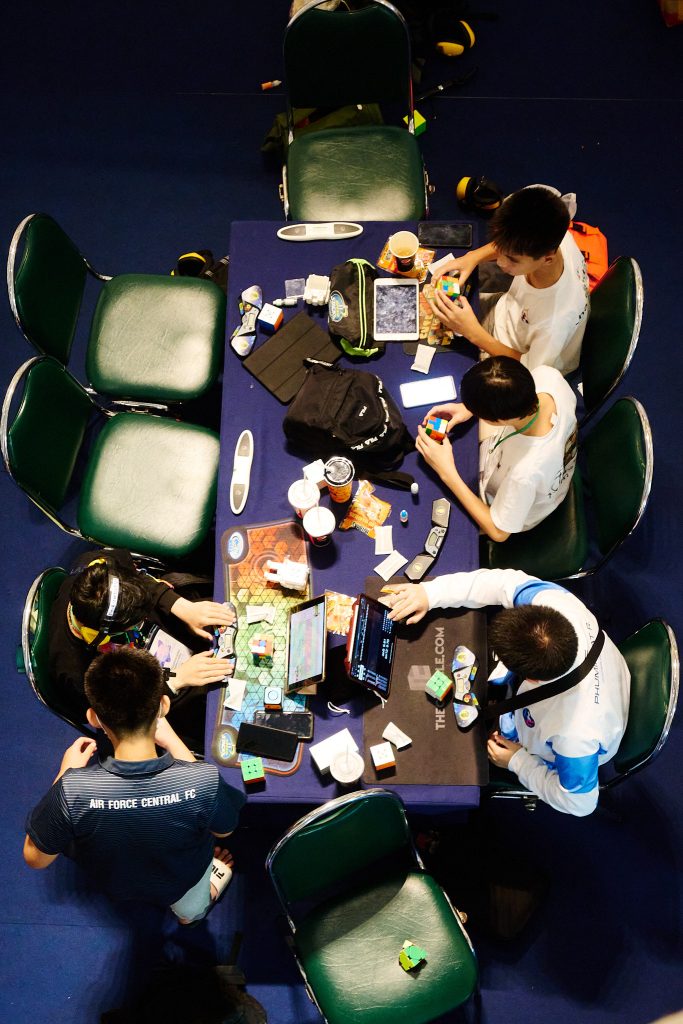
Rubik cube competition, Bangkok 2023
I use every opportunity and join events when I can. During events, I don’t hide myself to make photographs, on the contrary, I’m invasive. It’s a place where people will even perform better in front of the camera, it gives them more importance.
I travel light, in fact it depends. When I’m walking in a city where I live, I know I’ve time for myself. So I take one camera and one lens and I do my day with that. When I cover an event or when I travel, I usually work with two cameras and three lenses. As my lenses are M mount (whatever the camera I use), they’re quite small and light. I never bring my whole set when going out, it’s too heavy and it does not make sense, I’ll never use all this stuff in just one day.
Aperture, speed and sensitivity are the tree parameters that we have to decide when it come to get a correct exposition of your photographs.
Aperture refers to the quantity of light that your lens will get trough. The maximum aperture = length of the lens at infinite focus / width of the frontal glass. So a 50mm with a frontal glass of 25mm has a max aperture of 2. Inside the lens, there is diaphragm that you can close to change this value. Each value of the scale is the previous value times the square root of 2 and it divides by 2 the quantity of light.
So for a 100mm F2.8, the next step is 2.8 * sqrt(2) = 4. Set at f4, half the light go through.
The speed refers to the time that the shutter is open to expose the film (or the sensor). It’s written in fraction of a second. 8 means 1 second divided by 8. As you can guess, higher is the number, faster is the shutter (1/1000 is faster than 1/8) and each step half the quantity of light to impress the film.
The sensitivity defines how much light the film needs to be properly impressed (corrected exposed). We talk of ISO (or ASA). For each step, we need to twice the previous number by 2 and it needs half of the light for correct exposure. ISO 100 need twice more light than ISO 200. ISO 32000 need twice less light than ISO 16000.
Let’s take a few examples:
1/125 at F2.8 on ISO 100 is the same than 1/512 at F2 on ISO 200
Let’s detail the calculation:
1/125 -> 1/512 = 4 times less light
F2.8 -> F2 = twice more light
ISO 100 -> ISO 200 = The film requires half the quantity of light
Why do you want to set those parameter your self ?
There are several reasons for that.
– You need depth of field. The DOF is the range of distance in focus. The smaller is the aperture, the wider is the DOF. So a lens closed at F8 will have more things in focus than the same lens opened at F2. This is important if you have 2 subject you want in focus at different distance. The DOF goes 2/3 behind the point of focus and 1/3 before.
– You need less depth of field. For a portrait, you want to isolate the subject from the background, so you need to open your lens to reduce the DOF.
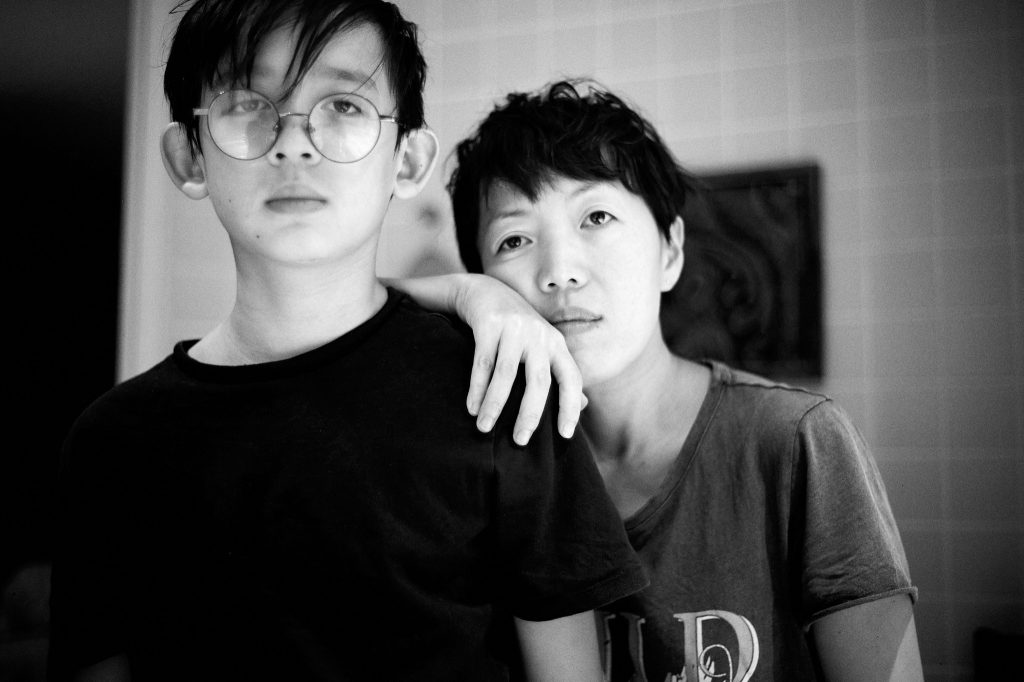
– You want to give an impression of speed to a moving subject. You can do that by decreasing the speed and move the camera to follow your subject why you make the photograph. It will blur the background and give a feeling of speed.
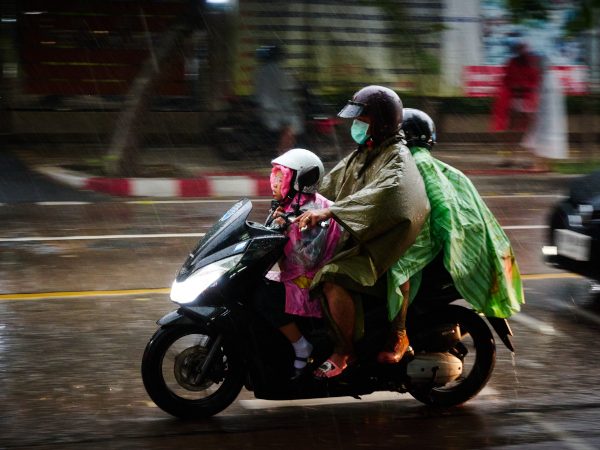
– You want to catch a moving target and increase the speed of the shutter (that’s why lenses used by photographers of sport are very big, to catch as much light as possible and use the fastest possible speed).
– You want to have a feeling of grain on your B&W photographs. Of course there are filters to do that, but real photographers use high sensitivity films (or increase the sensitivity of their sensor) to get the same result.
– You want to make photographs in the night, so you need films or sensor with high sensitivity.
Exemples goes on and goes on. Fact is, once a photographer understands those basic principles and is able to calculate fast the correspondant values between an exposure and another (keep the same exposure while changing those parameters), he gets a whole world of possibilities and opportunities to make shots differently.
50 years ago, half of the watches sold in the world were coming from Switzerland. For some historical reason, Switzerland was the country to build watches. Unfortunately for them, in the 80’s the quartz and the watches built in Japan were about to revolutionize this market. More recently the rise of the smartphones, which are able to give the time more accurately than an atomic watch, came to end this market.
But Switzerland industry did not give up, they adopted a change of strategy to face the disparition of their market: they increased the price of their watches. And it worked. Less people buy watches from Switzerland, but they buy them very expensive.
So why do they buy those watches, since the cheapest mobile is better at giving time. They claim that they buy the Switzerland know how, the very high quality of hand made watches.
That’s BS.
They buy a social marker. They buy an expensive item to show to the face of the world that they have money.
Leica has a very similar history, they were the most important brand of camera for professional until Nikon released the F in the 70’s. The Digital cameras put an end on this market and Leica has become a very minor player now in professional photography.
They followed exactly the same strategy than the Switzerland watch factories: sell obsolete and very expensive cameras, and all the same, it worked!
Leica buyers claim that they buy a know how and a hand made high quality camera. That’s a crappy lie, any Leica camera is obsolete with a very average quality standard, a low reliability and a very unprofessional lack of serious support from the brand.
It does not stand one second the comparaison with a Nikon or a Canon in any aspect.
Let me give you an overview on my Leica M9:
– the rangefinder is correctly calibrated for the infinite, but the camera is not. It means that the sensor is not exactly where it should be, I have to manually correct each shot to be in focus (how is that even possible?)
– changing the lens is a nightmare, the locking mechanism does not work half the time.
– Leica does not offer anymore the firmware updates for download. I’m not saying that they don’t make any update anymore, but even the old firmwares are not available for download. Whatever firmware version I have, I stay with it.
– The sensor is a time bomb, it suffers some corrosion and Leica does not have any solution anymore to repair it. If the sensor dies, they just give me a discount on the latest M11.
– A spare battery cost 150 Euro.
– The LCD is the worst I’ve ever seen (even at the time the camera was released, such LCD was an outrage for a 6k camera)
– It happens that the camera take some black photographs. I trigger the shutter, but the photograph is just black.
There is nothing perfect in the M9. There is no high quality whatsoever. If I were a professional, that’s the last brand I would use to make money and I would not trust it one minute to cover a mariage or an event.
So why did I buy a M9 in the first place?
That’s very simple : it’s a rangefinder and there is no competition on this market. I sincerely regret that Voigtlander did not follow up on digital rangefinder after their test (and commercial failure) with Epson on the RD1. The Bessa were very good cameras and I would have a RD4 or RD5 if it existed today instead of a Leica M9.
I can use M lenses, it’s all manual and I love that.
The color jpg of the M9 (thanks to Kodak) are piece of art, some say that they can get all the same with post-processing, I’m still to see the proof of that, fact is I could not reproduce the jpeg of the M9 starting from a DNG file from the same camera.
The B&W are average, I can not get out of it what I expect from such a camera. I regret that Kodak did not think of adding a TRI-X mode on their sensor. I did not test, but I’m quite sure that Fuji camera (especially GFX) are pretty good as well on this aspect.
Do I use my Leica as a social marker ? Let’s be clear, when you have a watch from Switzerland, nobody cares. The only person you convince is yourself. A Leica camera is exactly the same thing, nobody cares. People are much more impressed by a Nikon Z8 or Z9 than by a Leica. For common people, a Leica just looks like a cheap camera, if you tell them that’s not the case because a Leica is manual focus and has only a very crude light meter, then they don’t even see the point in using such a camera. Definitely, for the common people, Leica does not even have the aura of a Rolex or a Mercedes.